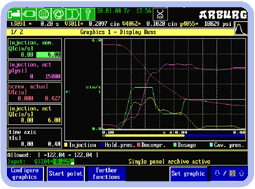Process

At JW Molding, Inc. Our knowledgeable staff and state-of-the-art equipment enable us to determine exact process parameters to produce dimensionally and aesthetically impeccable parts in quantities ranging from prototype to high volume production, delivered on-time.
We also provide the inspection services to back up our commitment of quality for our customers. Our in-house design and tooling expertise allows us to quickly accommodate part changes, revisions and maintenance.
The Process of Producing Injection Molds
The sequence of events during the injection molding of a plastic part is called the injection molding cycle. The cycle begins when the mold closes, followed by the injection of the polymer into the mold cavity. Once the cavity is filled, a holding pressure is maintained to compensate for material shrinkage. In the next step, the screw turns, feeding the next shot to the front screw. This causes the screw to retract as the next shot is prepared. Once the part is sufficiently cool, the mold opens and the injection molded part is ejected. Molding companies typically use the formula below to determine a cycle time of injection molds.
Time Function
The time it takes to make a product using injection molding can be calculated:
Total time = 2M + T + C + E
Where:
(2M) = Twice the Mold Open/Close Time
(T) = Injection Time (S/F)
(C) = Cooling Time
(E) = Ejection Time (E)
(S) = Mold Size (in3)
(F) = Flow Rate (in3/min)The total cycle time can be calculated using tcycle = tclosing + tcooling + tejection
- The closing and ejection times of injection molded parts can last from a fraction of a second to a few minutes, depending on the size of the mold and machine. The cooling times, which dominate the process, depend on the maximum thickness of the part.
Call Today (805) 499-2682
Call JW Molding, Inc. Today! (805) 499-2682
- Address: 2523 Calcite Circle
Newbury Park, Ca 91320Telephone: (805) 499-2682Fax: (805) 498-4022Email: ralfw@jwmolding.com Credit Cards Accepted
Copyright 2017 © JW Molding, Inc.

